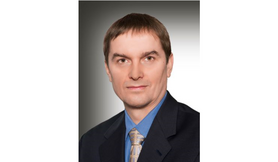Microplastic
![[Translate to English:] Plastikkanister auf dem Wasser umgeben von Polymerstrukturformeln](/fileadmin/HTW/Fakultaeten/LUC/Bilder/Forschung/Chemie/Mikroplastik/Titelbild_MP_Formeln2.jpg)
Microplastics describe plastic particles with a diameter of less than five millimetres. On the one hand, the quantities of plastic production and consumption are continuously increasing - according to Plastics Europe, 390 million tonnes were exceeded for the first time in 2021. On the other hand, recycling and disposal rates worldwide are well below this level. According to the OECD, only 9% of plastic waste is recycled, 19% is incinerated and almost 50% is disposed of in landfills. The remaining 22% is disposed of in uncontrolled landfills, incinerated in open pits or ends up in the environment, where plastic waste breaks down into microplastics. Microplastics can also be released into the environment through the use of plastic products. The effects of these particles in the environment have not yet been sufficiently researched.
At HTWD, we are working on a better understanding of the behavior of microplastics. To this end, a method has been developed to identify and quantify microplastics in river sediments faster and more cost-effectively than before. Electrostatic separation in combination with differential scanning calorimetry has been optimized for application in research projects and tested on laboratory and environmental samples. The process was awarded the Saxon Environmental Prize in 2019. The application of this method to investigate microplastics in bank filtration and drinking water treatment is a new aspect of microplastics research at HTWD.
Current Projects
ESF-Nachwuchsforschergruppe (Junior Scientists Group) SEMUWA (2023 – 2024)
In the junior scientists group SEMUWA - Safe removal of microplastics during bank filtration and drinking water treatment in Saxony - young graduates of the HTW Dresden and the TU Dresden acquire qualifications in various fields of microplastics research. In Saxony, about 27% of drinking water is obtained by bank filtration and artificial groundwater recharge. The aim of the SEMUWA project is to investigate the behavior of microplastics in water extraction by bank filtration on rivers in Saxony and in further water treatment in waterworks. To determine the retention of microplastics in the riverbed, in the aquifer and in filter materials and filter backwash sludge, methods of electrostatic and density separation for fine-grained, organic-rich solids are combined and optimized. A significantly lower limit of quantification will be achieved for the analytical method developed at HTWD using differential scanning calorimetry. To quantify the removal performance in drinking water treatment, laboratory tests and plant tests are carried out in waterworks with novel, fluorescent and degradable microplastic standards, which are produced using 3D printing. A scientifically sound assessment of potential risks is prepared for the water suppliers. Four young female and two male junior researchers will be led to their doctorates. Public relations, student projects and contributions to the Long Night of the Sciences are intended to increase interest in scientific and engineering courses and projects.
Project to validate a method for the identification and quantification of microplastics with superimposing signals (2023 – 2024)
As part of the validation project, the method for identifying and quantifying microplastics in sediment samples will be further developed. The basis for this is the patent DE 10 2020 115 971, which describes the method developed at the HTW for the quantification of polymer species in a sample containing polymer particles. The aim is to enable the determination of microplastic particles from polymers with the superimposing thermal signals. For this purpose, various separation methods and mathematical methods for separating the superimposed signals are investigated. The mixtures PE-PP, PET-PVC and PET-PA6 are particularly relevant. The planned activities will develop a potential method for the relevant mixtures to further develop the existing enrichment processes.
Finished Projects
In the junior scientist group VEMIWA - Occurrence and Behaviour of Microplastics in Saxon Waters - graduates from various disciplines qualified to develop a novel method for the identification and quantification of microplastics in sediment samples. Established methods from the fields of sampling, electrosorting and polymer analysis were combined to create a novel process that enables time- and cost-efficient monitoring of microplastics in river sediments. A key element is the thermodynamic fingerprint. The thermodynamic fingerprint combines all thermodynamic information of a polymer, such as melting and crystallisation temperatures and enthalpies. This makes it possible to identify different polymers in sediment samples. An easily determined thermodynamic state variable (enthalpy) is used to quantify the microplastic content of a sample. The detection method was further developed by multivariate evaluation of the thermodynamic fingerprint, which reduced the influence of error sources on the analysis result and increased the robustness of the method.
Alongside their qualifications, the young researchers also trained in the areas of project management and social skills and gained experience in their own teaching activities. Public relations and science communication campaigns were organised, including lectures at primary schools, secondary schools, universities and the Dresden Senior Citizens' Academy, and a travelling exhibition was prepared.
The German Marine Foundation and the Bundesverband Meeresmüll e.V. have been organising expeditions along the German section of the Elbe river with the research and media ship Aldebaran since 2020. In 2020 and 2021, the HTWD took part in the tours, sampling sediments from the entire German section of the Elbe river for the first time and analysing them for microplastic pollution. A total of 43 sediment samples were analysed using the analysis method developed at the HTWD. Media campaigns were organised during the expeditions and a video diary was published on YouTube.
In this project, an initial review of microplastic pollution at monitoring sites in the Saxon water monitoring network was carried out together with the Saxon State Office for Environment, Agriculture and Geology. To this end, the method developed in the VEMIWA project for monitoring microplastics in sediments was further developed and adapted to the specifics of these sampling points. The combination of electrostatic separation for the enrichment of microplastics from sediment samples and dynamic differential calorimetry to determine the microplastics content was the main focus. Thirty samples were taken from selected locations in the Saxon water quality monitoring network and analysed for their microplastic content. Very low levels of microplastic were found in many of Saxony's smaller water bodies, in many cases below the detection limit.
Contact
Project Lead

Prof. Dr.-Ing. Marc-Peter Schmidt
- Z 435
- +49 351 462 2504
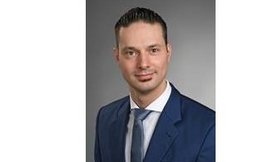
Scientific Staff
| Name |
Telephone (0351 462 - ) | Room | Tasks | |
|---|---|---|---|---|
| Ding, Jiaxing (M.Eng.) | 3382 | U 202 | Microplastics, Bank Filtration | |
| Hauffe, Maurice (M.Sc.) | 2165 | A 302 | Polymer Chemistry, Microplastic Analysis, 3D-Printing | |
| Kretschmar, Oliver (B.Sc.) | 3278 | A 301 | Polymer chemisty, Microplastic-analysis | |
| Kurzweg, Lucas (M.Sc.) | 2451 | A 301 | Microplastic in the environment | |
| Rau, Cindy (M.Sc.) | 3944 | U 202 | Microplastics, water treatment | |
| Schneider, Jann (M.Sc.) | 3279 | A 302 |
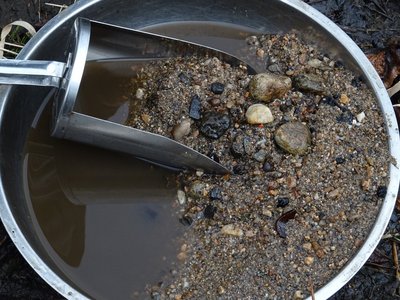
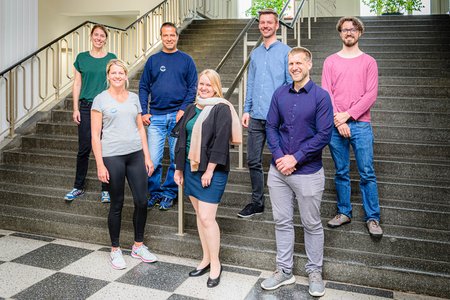
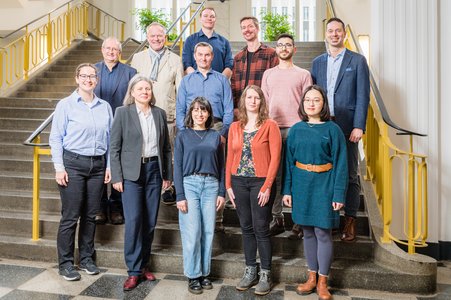


![[Translate to English:] Logo Umweltpreis](/fileadmin/_processed_/0/5/csm_SUP_SMUL_b5626c17e1.jpg)

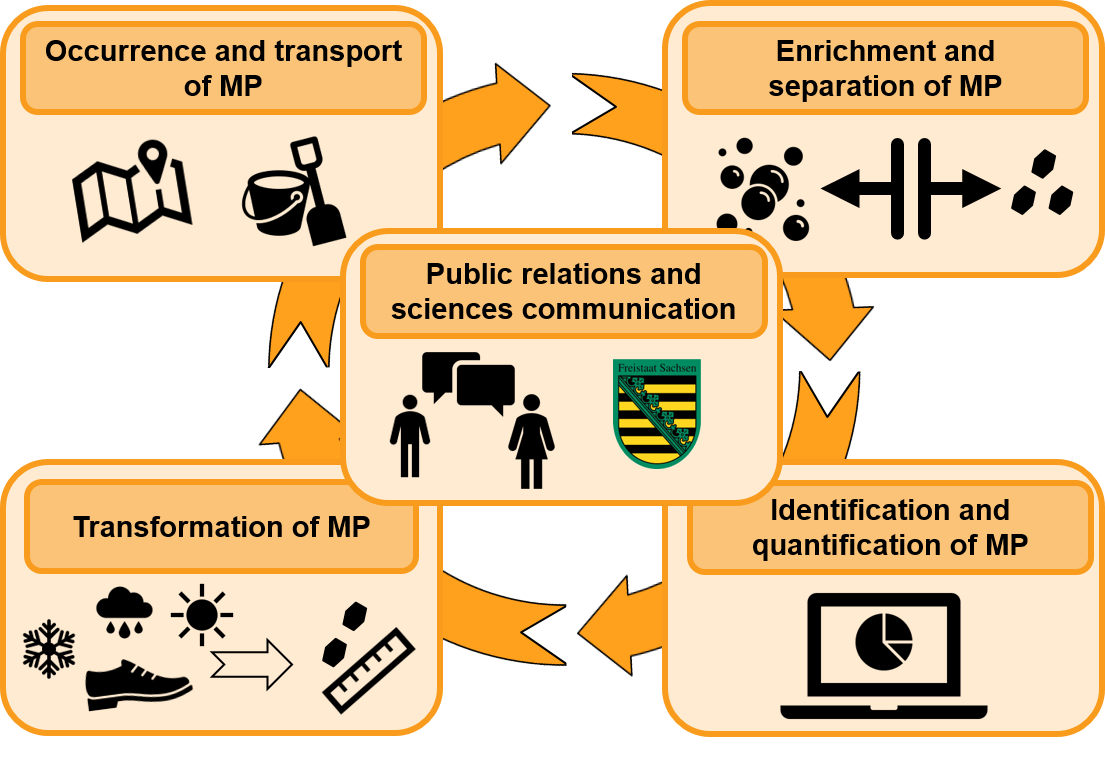
![[Translate to English:] Foto Zschopau](/fileadmin/HTW/Fakultaeten/LUC/Bilder/Forschung/Chemie/Mikroplastik/klein_LfULG_Fluss.png)

